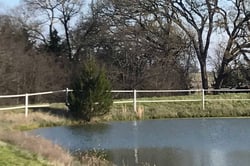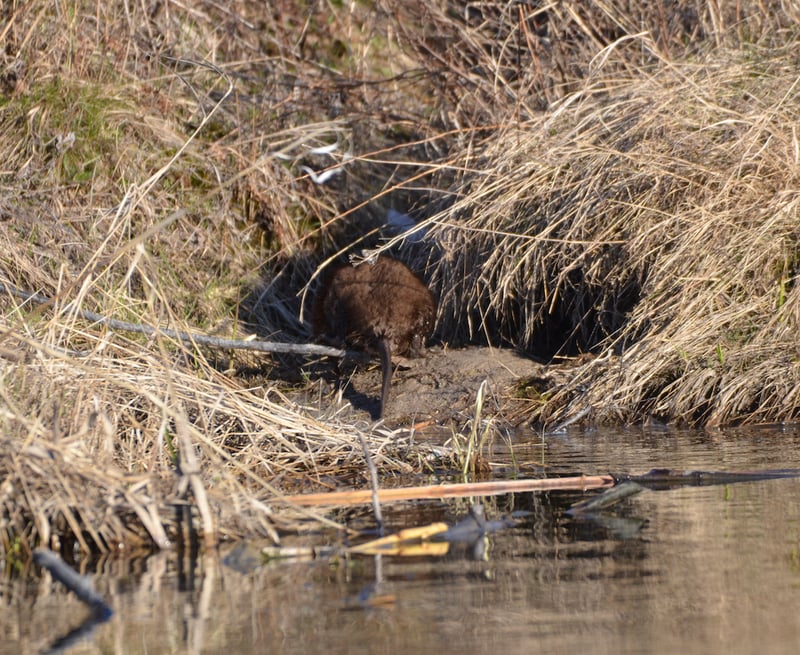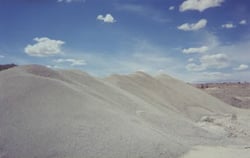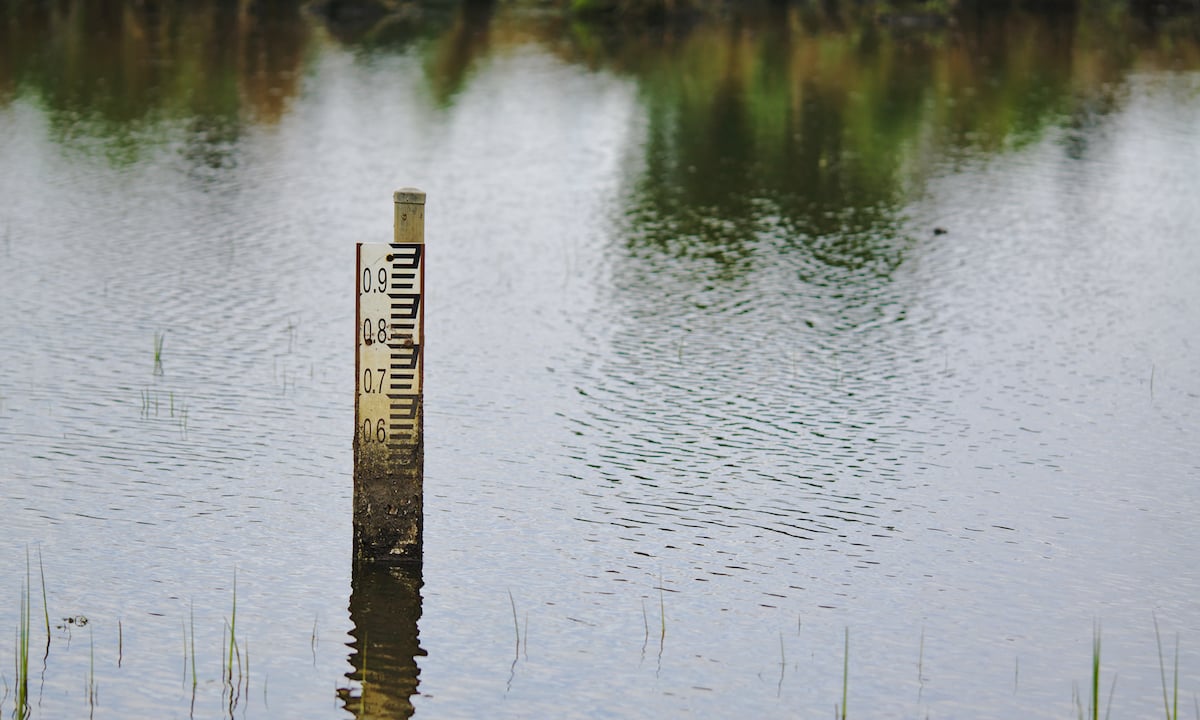Even though at Pond King, we don't do dirt work, we often get asked how to fix a leaky pond.
Here are some tips on finding the leak, repair options, and some prevention advice.
How Can You Tell if Your Pond is Leaking?
Common signs of a leaking pond include a noticeable reduction in water level and saturated soil along the shore or behind the dam.
Numerous factors can cause these leaks, but some of the most common include:
- trees in the dam
- improper construction
- low clay content in the soil
- wildlife holes/dens
- and outlet pipes
Pay Attention to Water Level to Determine if a Pond is Leaking
It is also important to consider if the reduction in water level results from a leak or a combination of evaporation and natural water uptake.
All ponds experience some seepage and evaporation.
Typically, this natural water loss will only account for up to ½" per day during the hottest months.
Marking the waterline with a flag or stick and monitoring for a 24hr period is a simple way to check if a leak is present or not.
Common Causes of a Leaking Pond

-
1. Tree Root Damage
Trees such as willows can cause serious problems for pond dams.
The root systems of willow trees seek water and can extend deep into a pond dam. These roots create pathways for water in the dam that can lead to erosion and possibly eventual failure of the dam.
Therefore, we strongly recommend preventing woody plants from being established on the dam for the longevity of the pond dam.
2. Poor Pond Construction
Poor construction and low clay content are common causes of excessive seepage and even dam failure.
Characteristics of a well-constructed dam include a sufficient Core Trench (greater than 4 feet), proper 3:1 slope ratio (3 feet in length for every 1-foot in elevation), and soil (20% clay) compacted in 6-inch layers.
Dams built with these properties are less likely to have seepage and failure.
In addition, ensuring the installation of anti-seep collars on drain pipes is critical to prevent drains from being blown out.
Finally, to properly seal and prevent seepage, the pond bottom should consist of 1 foot of 20% clay for every 10 feet of water. For example, areas with water 20-feet deep need 2 feet of clay substrate.
3. Nuisance Wildlife
Muskrat and beavers are well known for burrowing into pond dams.
This damage can also result in leaks or failure of the dam. You should cover holes with riprap, or you can collapse the burrow and fill it in with clay (only possible at the top surface of the dam).
At this point, you should trap and remove the animals, or they will reopen their previous holes.

4. Drainage Pipes
There are two issues related to drainage pipes.
The first is that metal drainage pipes can rust and crack over time, creating unseen leaks within the water column.
You can alleviate this problem by using heavy-duty PVC pipe instead of metal.
The second issue is caused by not using anti-seep collars on drain pipes. Anti-seep collars prevent water from working through the dam as it flows along the sides of the pipe.
Without anti-seep collars, water flows along the sides of the drainage pipe, increasing the likelihood of a blowout, which could cause dam failure.
Following the above advice will help you prevent leaks and improve the structural integrity of your pond.
Repairing a Leaky Pond
The first step in repairing a pond leak is first locating it.
You can find the leak by inspecting the pond dam and drainage system. Damaged/rusted metal pipes or soft saturated portions on or below the dam will indicate the issue is within the dam.
If everything checks out, the leak is likely along the shoreline or at the bottom of the pond.
Saturated areas around the shoreline can indicate a leak in the bank. If you don't find any of these saturated areas, the leak may be in the pond substrate.
How do you Fix a Pond Leak?
Draining the lake is often the best option to repair the dam or drain pipe.
If you drain your pond, you'll be able to use the right equipment to repair and recompact the dam.
In some instances, you may not need to drain the lake completely but instead drain it to the point that allows access to the damaged area.
Common dam repairs include:
- A new core.
- Tilling bentonite clay into the front of the dam.
- Adding new drainpipe(s) and anti-seep collar(s).
You may be able to repair leaks found around portions of the bank by draining the lake and tilling bentonite clay into the top 6 inches of soil, and repacking.
You could also install a core trench similar to that within the dam to prevent the seeping. If you would rather not drain the lake, you can try mixing bentonite clay with water and pouring it into the problem areas of the pond, but it is less effective than mixing the Bentonite directly in the soil.
Methods for repairing leaks in the substrate are similar to repairing leaks around the bank. Mixing bentonite clay and water and pouring it throughout the pond is an option because the clay will coat the bottom and expand to fill gaps.
The best method for repairing excessive seeping in the substrate is draining and recompacting soil (20%) clay at least 1 foot deep per every 10 feet of water in that portion of the pond.

You can use Bentonite Clay in powder or granular forms. The powder form of Bentonite works better when applied to a drained pond and mixed with the soil, while the granular form works better in ponds that are still full.
Applying the granular on a full pond is often less expensive, but results are less consistent.
Bentonite works by absorbing and expanding as much as 10-20 times to fill cracks and leaks in the soil.
Application Rates: Bentonite Clay application varies due to soil composition. Areas of less porous soil need less Bentonite, while more porous areas need much more. Applications range from 1 pound per square foot to 5 pounds per square foot.
- 1.0lbs/sqft = good clay
- 2.0lbs/sqft = fair clay
- 3.0lbs/sqft = poor clay composition
- 5.0lbs/sqft = gravel/rock substrate
We recommend a soil sample to determine the appropriate bentonite application rate.
Pond King Can Help Your Manage Your Private Pond
Your pond or lake may require slight variations for proper management based on a lot of conditions. If you have any questions or have any observations of your own outside of what I outlined here, I’d love to hear from you. Contact us anytime or call to ask a pro how Pond King can help you seal your lake!
See y'all down at the pond.



